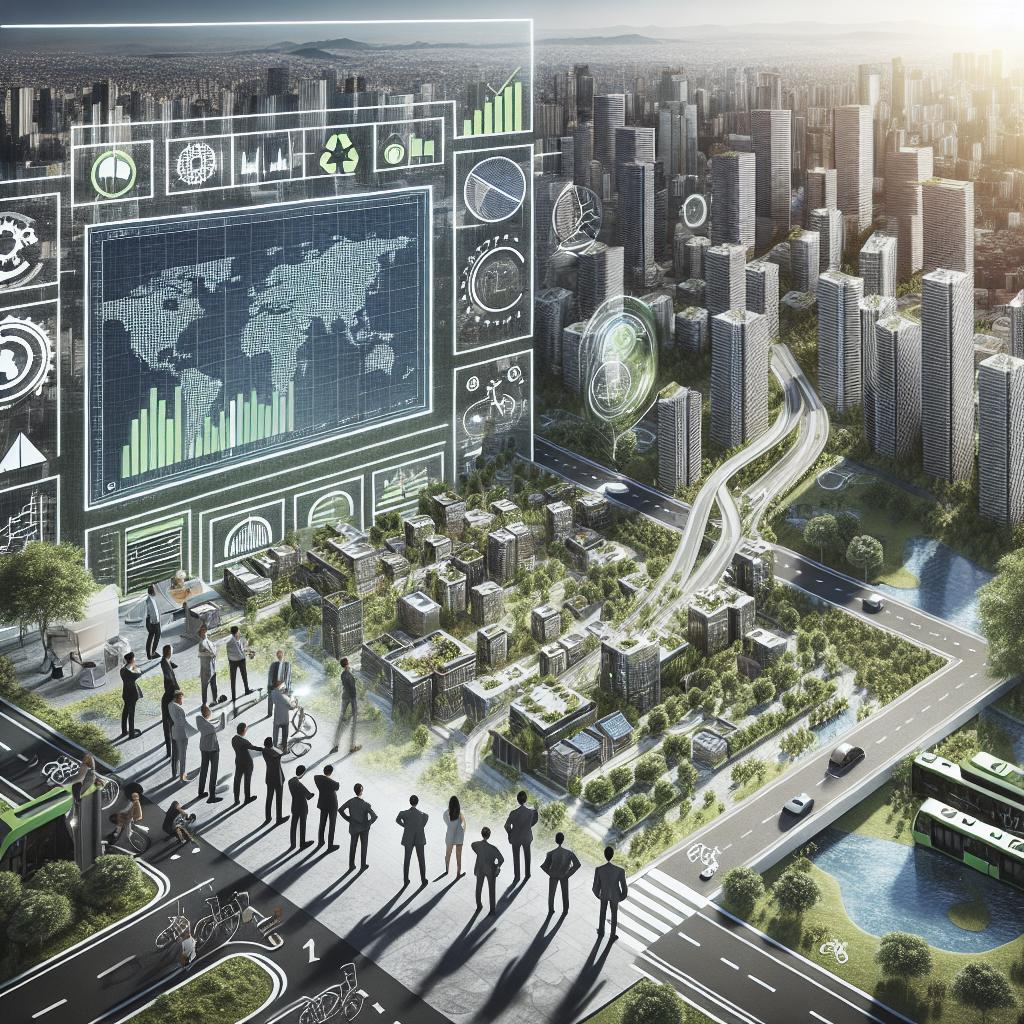<>
Urban growth is happening at an unprecedented pace worldwide, and managing it sustainably is essential for the well-being of the populace and the health of the planet. In this blog post, we will delve into various strategies for sustainable urban management. We will explore the significance of developing sustainable urban transport systems, the advantages of employing nature-based solutions in cities, and the importance of strengthening community networks to bolster urban disaster resilience. We’ll also examine how smart solutions can elevate urban living standards and stress the critical need for cities, countries, and international bodies to work together harmoniously. By understanding and implementing these diverse strategies, cities can grow dynamically while maintaining a balance with ecological and human factors.
Urban transport systems need to become more sustainable
The rapid expansion of urban areas has led to an increased demand for efficient and sustainable transport systems. Public transportation can reduce the number of private vehicles on the road, lowering greenhouse gas emissions. Cities like Copenhagen and Amsterdam have set exemplary models by investing heavily in cycling infrastructures and eco-friendly buses that utilize biogas or electric power. These measures not only minimize pollution but also encourage a healthier lifestyle among residents. Moreover, integrating multimodal transport systems that combine cycling, walking, and public transit can drastically reduce the carbon footprint. Strategies like Bus Rapid Transit (BRT) systems, dedicated bicycle lanes, and pedestrian zones make commuting both efficient and sustainable. Connecting data-driven insights with urban mobility planning can further enhance the effectiveness of these transport systems. For example, real-time data analytics can optimize routes, reduce congestion, and improve safety.
Nature-based solutions work for cities, too
Urban areas can incorporate nature-based solutions to tackle environmental challenges and improve quality of life. Green roofs, urban forests, and rain gardens are not just aesthetic enhancements but also functional elements that mitigate urban heat islands and manage stormwater. These features help cities adapt to changing climate conditions while providing recreational spaces for residents. Moreover, preserving and expanding urban green spaces can enhance biodiversity and ecological health. Cities such as Singapore have integrated vertical gardens and green facades into their architectural designs, which purify air and provide natural cooling. Such initiatives not only align with sustainable urban growth but also contribute to the mental and physical well-being of city dwellers.
Community networks can support urban disaster resilience
Strong community networks play a crucial role in making cities resilient to disasters. Local communities often have a granular understanding of the vulnerabilities and resources within their areas, making them an invaluable asset during emergencies. Establishing neighborhood watch programs, localized disaster response teams, and community emergency plans can significantly bolster urban resilience. Technology can also aid in strengthening community networks. Platforms that facilitate real-time communication between residents and local authorities can provide timely information and resources during crises. For example, community-based mobile apps can disseminate emergency alerts, offer guidelines on disaster preparedness, and coordinate volunteer efforts, making the response more organized and effective.
Smart solutions can improve urban livelihoods
Innovation and technology are at the forefront of transforming urban living conditions sustainably. Smart cities leverage the Internet of Things (IoT), artificial intelligence, and big data to create more efficient and responsive urban environments. Smart grids, intelligent traffic management systems, and waste management solutions can substantially reduce energy consumption and improve service delivery. For instance, smart lighting systems that dim automatically when there’s no activity can save substantial amounts of energy. Real-time monitoring of waste bins can optimize collection routes and reduce the environmental footprint of waste management operations. This kind of data-driven approach leads to more efficient utilization of resources, which is crucial for sustainable urban growth.
Cities, countries, and international bodies need to collaborate
Collaboration across different levels of governance is essential for achieving sustainable urban growth. Cities can learn from each other’s successes and failures by participating in international forums and networks such as C40 Cities or ICLEI – Local Governments for Sustainability. These platforms offer invaluable resources and frameworks for implementing sustainable practices. National and international policies also play a significant role. Strong governance frameworks, backed by legal regulations and financial incentives, can guide and support local authorities in their sustainability efforts. Joint ventures between cities, supported by international bodies, can result in scalable and replicable models for sustainable development, making it easier for growing metropolises to adopt best practices. ### Lessons learned
| Strategy | Key Points |
|---|---|
| Urban Transport Systems | Public transportation, multimodal transport systems, real-time data analytics |
| Nature-Based Solutions | Green roofs, urban forests, rain gardens, preserving urban green spaces |
| Community Networks | Neighborhood watch programs, localized disaster response teams, community-based mobile apps |
| Smart Solutions | IoT, AI, big data, smart grids, intelligent traffic systems, waste management |
| Collaborative Efforts | International forums, national policies, governance frameworks |
By embracing a blend of these strategies—sustainable transport, nature-based solutions, community collaboration, smart city technologies, and international cooperation—urban areas can be better equipped to grow in ways that are ecologically sound and socially inclusive. This holistic approach ensures that urbanization does not come at the expense of the planet but rather contributes positively to its health and to human well-being.


